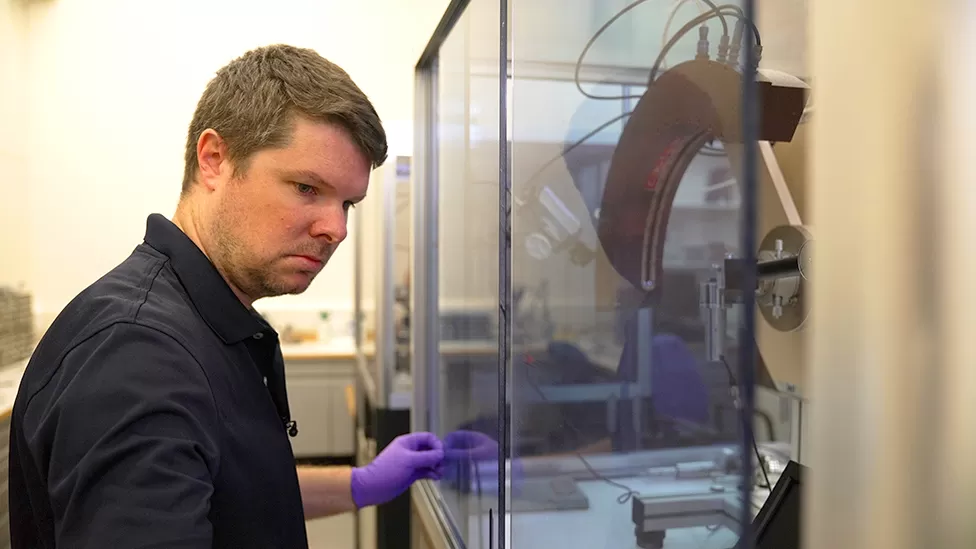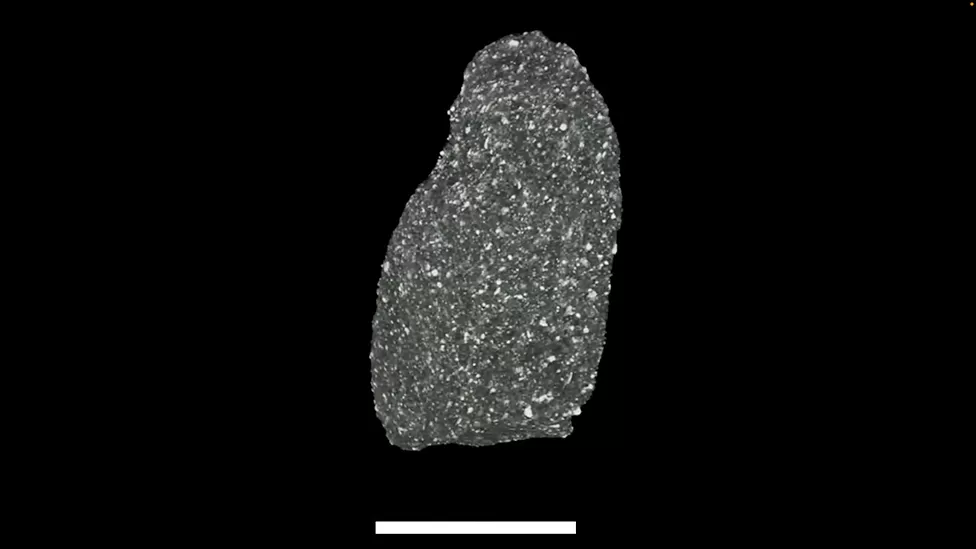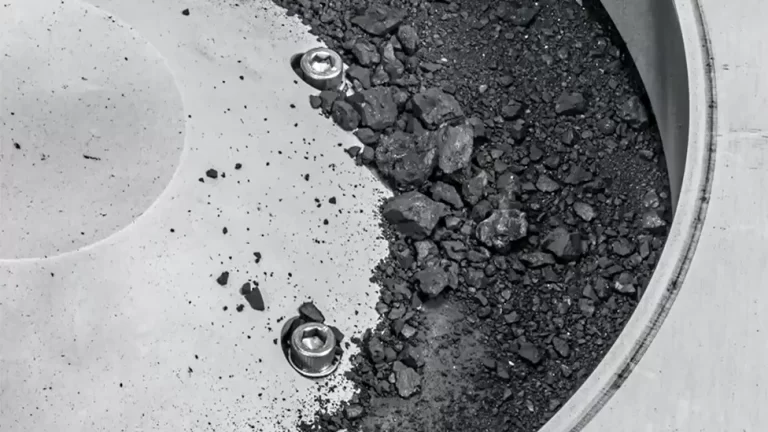“It's beautiful, it really is – certainly what we've seen of it so far,” said Dr Ashley King.
The UK scientist was in a select group to put first eyes and instruments on the rocky samples that have just been brought back from asteroid Bennu. The materials, scooped up by a US space agency (Nasa) mission and returned to Earth 17 days ago, are currently being examined in a special lab in Texas.
“We've confirmed we went to the right asteroid,” Dr King told BBC News. The three-day analysis by the Natural History Museum (NHM) expert and five others on the “Quick Look” team showed the black, extraterrestrial powder to be rich in carbon and water-laden minerals.
That's a great sign. There's a theory that carbon-rich (organic), water-rich asteroids similar to Bennu may have been involved in delivering key components to the young Earth system some 4.5 billion years ago. It's potentially how we got the water in our oceans and some of the compounds that were necessary to kick-start life.
The Bennu samples will be used to test these ideas.
“We're trying to find out who we are, what we are, where we came from. What is our place in this vastness called the Universe?” said Nasa Administrator Bill Nelson during a briefing at the Johnson Space Center, where the dedicated lab is housed.
Although it's evident the mission has returned an “abundance of sample”, scientists are still not sure precisely how much of Bennu they actually have in their possession.
The sample canister which landed in the Utah desert on 24 September has been opened but its inner chamber used by the Osiris-Rex spacecraft to store the asteroid fragments for the journey home has yet to be fully emptied of its contents and weighed.
The mission team thinks it has about 250 grams (9oz) in total. It will take a few more days' careful disassembly to corroborate this estimate.
To perform their initial experiments, Dr King and colleagues used particles that had been spilled from the inner chamber – or Tag-Sam (Touch And Go Sample Acquisition Mechanism) as it's known. This fine Bennu dust coats all the canister's enclosing surfaces.

“When they took the lid off the sample canister, it just revealed this black powder everywhere. It was incredible; it was so exciting,” Dr King recalled.
“We were sitting at the time and everybody just stood up and started pointing at the screen. It meant we had lots to play with for the Quick Look. It made our job easier.” The dust was put in an electron microscope, subjected to X-ray diffraction and infrared spectroscopy techniques and scanned by a computed tomography (CT) machine.
One of the key findings is the presence of that carbon. Lots of it. Close to 5% by weight.
“That's a big deal. When the data came back, there were scientists on the team going ‘Wow, oh my God!' said Dr Daniel Galvin, an analyst from Nasa's Goddard Space Flight Center. The Quick Look team detected both carbonates and more complex organics.
Osiris-Rex principal investigator Dr Dante Lauretta highlighted the samples' water content held in clay minerals.
“They have water locked inside their crystal structure,” the cosmochemist from the University of Arizona explained.
“I want to stop and think about what that means. That water – that is how we think water got to the Earth. The reason that Earth is a habitable world – that we have oceans and lakes and rivers and rain – is because clay minerals, like the ones we're seeing from Bennu, landed on Earth 4.5 billion years ago.”
The Osiris-Rex spacecraft picked up the Bennu materials in October 2020, using a daring manoeuvre to approach and then “high-five” the asteroid – an operation performed while 330 million km (205 million miles) from Earth. It then took almost three years, for the Nasa probe to come home and drop off its precious cargo at a restricted military test range a couple of hours' drive west of Salt Lake City.
Once the full sample is extracted, a portion of it will be shared with researchers worldwide. About 100 milligrams is expected to come to the UK to be further worked on by Dr King's department at the NHM, and by collaborators at the Open, Oxford and Manchester universities.
The Osiris-Rex teams aim to have a raft of studies completed in time to report at the Lunar and Planetary Science Conference (LPSC) in March. Two major overview papers are also expected to be published at the same time in the journal Meteoritics & Planetary Science.
Nasa plans to put roughly 75% of the sample straight into the archive to preserve for future generations – for scientists who may not even have been born yet to work in laboratories that don't exist today, using instrumentation that still awaits invention.

“The science obtained during the mission so far, coupled with the samples we're only now getting a glimpse of, is just the beginning of the wealth of knowledge that we can expect from Osiris-Rex,” said Eileen Stansbery, the chief scientist at Johnson.
— CutC by bbc.com


